Death Valley National Park
|
|
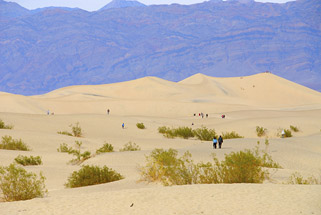
click photo to enlarge |
While Death Valley is a desert, less than 1% of it is covered with Sand Dunes.
In order for there to be sand dunes there must be a source of sand and winds
to move that sand to a point where it can be collected or trapped. The sand
dunes shown are the Mesquite Flat Dunes near Stovepipe Wells. As you can see
it is a fairly popular place. |
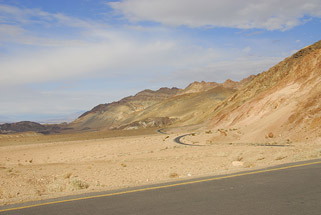
click photo to enlarge |
The picture to the left is driving into the park from the southern entrance
and on the way to Badwater, the lowest point in the park. Badwater slat
flats cover almost 200 square miles of Death Valley. Artist's Palette is the
picture with all the colors. It is off the 9 mile Artist's drive scenic loop
and is a must do while in the park. |
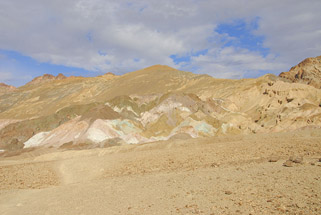
click photo to enlarge |
Death Valley has a history tied to the Harmony Borax works pictured in the
lower left. While there were people in the Death valley area long before
this, it was Harmony Borax that paved roads into Death Valley. Ubehebe Crater it the picture below. It is a volcanic crater 600 feet deep
and 1/2 mile wide. We have been to Death Valley at least a dozen times now
at all different times of the year. We were there once in the middle of
summer and the temperature was about 130 degrees. We have been there twice
now around January 1st, the busiest time of the year for the park, and the
temperatures have been pleasant. No matter what time of year I always find
it to be dramatic and photogenic. |
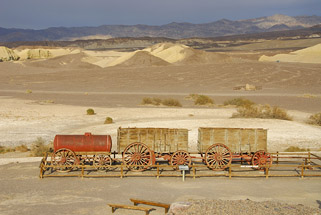
click photo to enlarge |
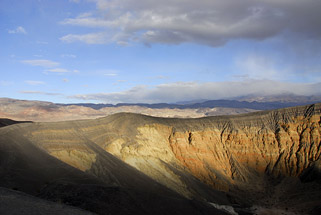
click photo to enlarge |
| |
|
|
|
|
|
|
|
|
|
|
|
|
|




